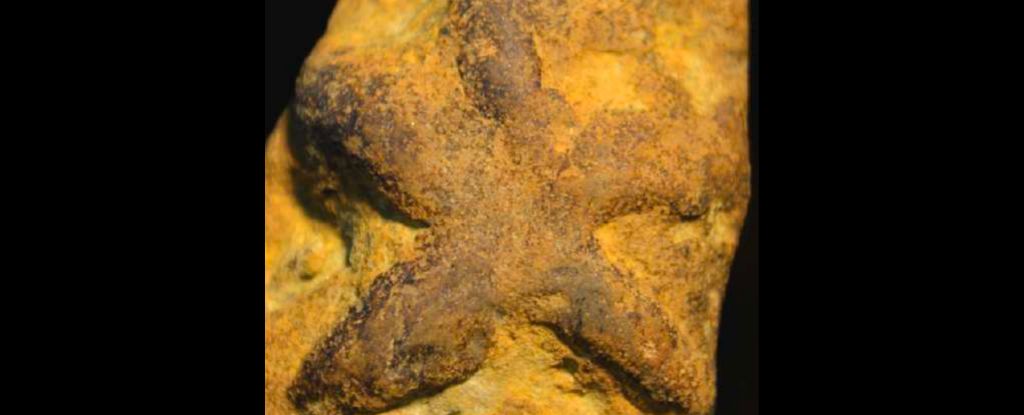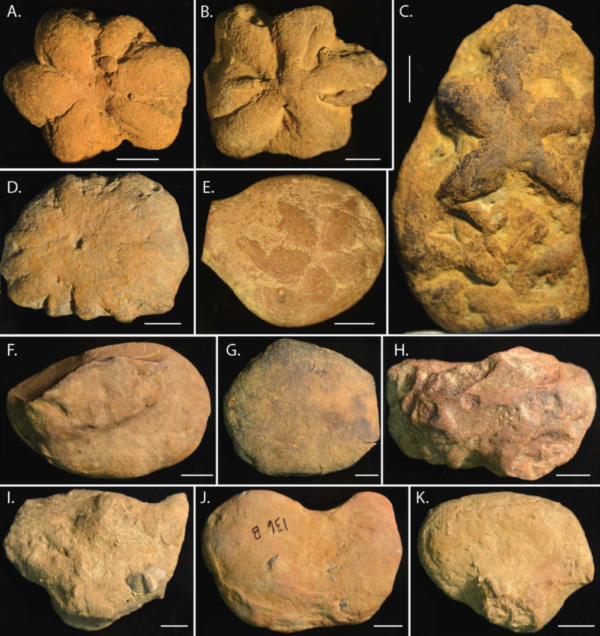
Posted on 02/24/2023 11:07:09 AM PST by Red Badger

An example of a Brooksella 'fossil'. (Nolan et al., PeerJ, 2023)
An ancient three-dimensional star-shaped 'thing' still baffles scientists more than a century after its discovery.
The undetermined whatchamacallits were found in 500-million-year-old bedrock in the southwestern United States in 1896. To the untrained eye, they look sort of like bundt cakes: circular with radial lobes spreading outwards like a starfish or the spokes of a bike.
At the time, archaeologists assumed these were the remnants of ancient, tentacled jellyfish, a lineage of animal that stretches back at least 890 million years. They named it Brooksella alternata, which became a catch-all for any Brooksella-like artifact found, of which there are many.
A few examples can be seen in the image below.

Brooksella Examples Examples of Brooksella-like objects found in the southwestern US. (Nolan et al., PeerJ, 2023)
These bizarre Brooksella moldings have suffered a fundamental identity crisis since they received their name.
Over the decades, scientists have argued they are the remnants of burrowing worms, bulbous algae, or glass sponges.
Meanwhile, others are unconvinced these are even 'fossils', instead explaining them as gas bubbles.
Now, researchers are throwing out yet another suggestion of non-biological origins. A fresh look at Brooksella using high-resolution 3D imaging and chemical analysis suggests this is, in fact, a 'pseudofossil'.
According to a new study's authors, Brooksella is not a sponge, as is generally accepted nowadays, but an unusual form of silica. This naturally occurring mineral particle can fuse to form spherical, cubical, or hexagonal shapes.
"We found that Brooksella lacked characteristics of glass sponges, especially the opaline-fused spicules that compose the body," researchers explain.
"Nor did it grow as a sponge would be expected to over its lifetime."
What looks like Brooksella's 'mouth' is actually oriented downwards towards the sediment, making it extremely difficult to filter food from the water as sponges do.
A downward-facing mouth might make you think of a starfish, but the ancestor of all starfish is believed to have arrived on Earth's scene only 480 million years ago, tens of millions of years after the dating of bedrock where Brooksella has been found.
Burrowing worms don't seem to be a fulfilling explanation, either. While these organisms were present on Earth during the middle Cambrian, researchers found no sign that they made the star-shaped lobes.
The only explanation that made any sense came when experts compared Brooksella to other concrete silica shapes made in different Cambrian rock beds around the world.
"We did not find any difference between Brooksella and the concretions, other than Brooksella had lobes and the concretions did not," the researchers write.
"We thus concluded that Brooksella was not part of early sponge diversification in middle Cambrian seas, but rather, was an unusual type of silica concretion. Concretions can be all kinds of shapes to the point some look like they were organically formed."
On Mars, for instance, silica-rich rocks can form flower-shaped petals. And here on Earth, lightning can shock underground sand into a branching, crystallized form called a fulgurite.
"Brooksella intrigued me because, unlike most fossils, it had a 3D shape like a star-shaped puffed pastry that is unusual for soft-squishy animals like a sponge," explains paleontologist Sally Walker from the University of Georgia.
"A sponge usually gets flattened like roadkill during the fossilization process—especially a fossil more than 500 million years old! Also puzzling was the fact that no one inspected Brooksella where it lived and its orientation; if they did, they would find that most lobes were oriented downward, which does not make sense for a sponge to be eating mud."
But that doesn't mean researchers have solved all of Brooksella's mysteries. It's still unclear, for instance, why so many strange concretions with the same shape have been found in this one region of the world.
These objects look quite similar on the outside, but when researchers examined their internal dynamics using microCT scanning, they found they were all inherently quite different.
Further research will be needed to figure out how they actually formed.
"While the applications for microCT have been nearly endless in the materials sciences and engineering fields, its capacities for elucidating the fossil record are really just beginning to be explored," says geologist James Schiffbauer from the University of Missouri.
"This project is an excellent example of the types of fossil mysteries we can solve with applications of microCT."
The study was published in PeerJ.
PING!....................
Grant Money is forever.
I am sure that the globalists would want us to eat these instead of steaks.
Coprolites.....................
Looks like a starfish
That was one theory.................
I know a turd when I see one
Maybe they were started by a living entity which deteriorated enough or washed away before becoming fossilized.
Pentaturd.

These people will try and say anything, under the guise of science...
How do know the age of any fossil?
It’s all fake science...
It was the remnants of an alien space traveler who set wrong coordinates in the teleport and arrived inside a rock formation.
“the ancestor of all starfish is believed to have arrived on Earth’s scene only 480 million years ago...”
That makes it sound like starfish came to this planet from space like in some HP Lovecraft story.
If they had been found in Beverly Hills, it would have been easy to identify them as some of Ellie-May’s loaves of bread.
Some of them seem to be about the same size as a cookie or muffin. This will require more bread for further study.
Thanks Red Badger.
Looks like a butter cookie from a cookie press.
Disclaimer: Opinions posted on Free Republic are those of the individual posters and do not necessarily represent the opinion of Free Republic or its management. All materials posted herein are protected by copyright law and the exemption for fair use of copyrighted works.